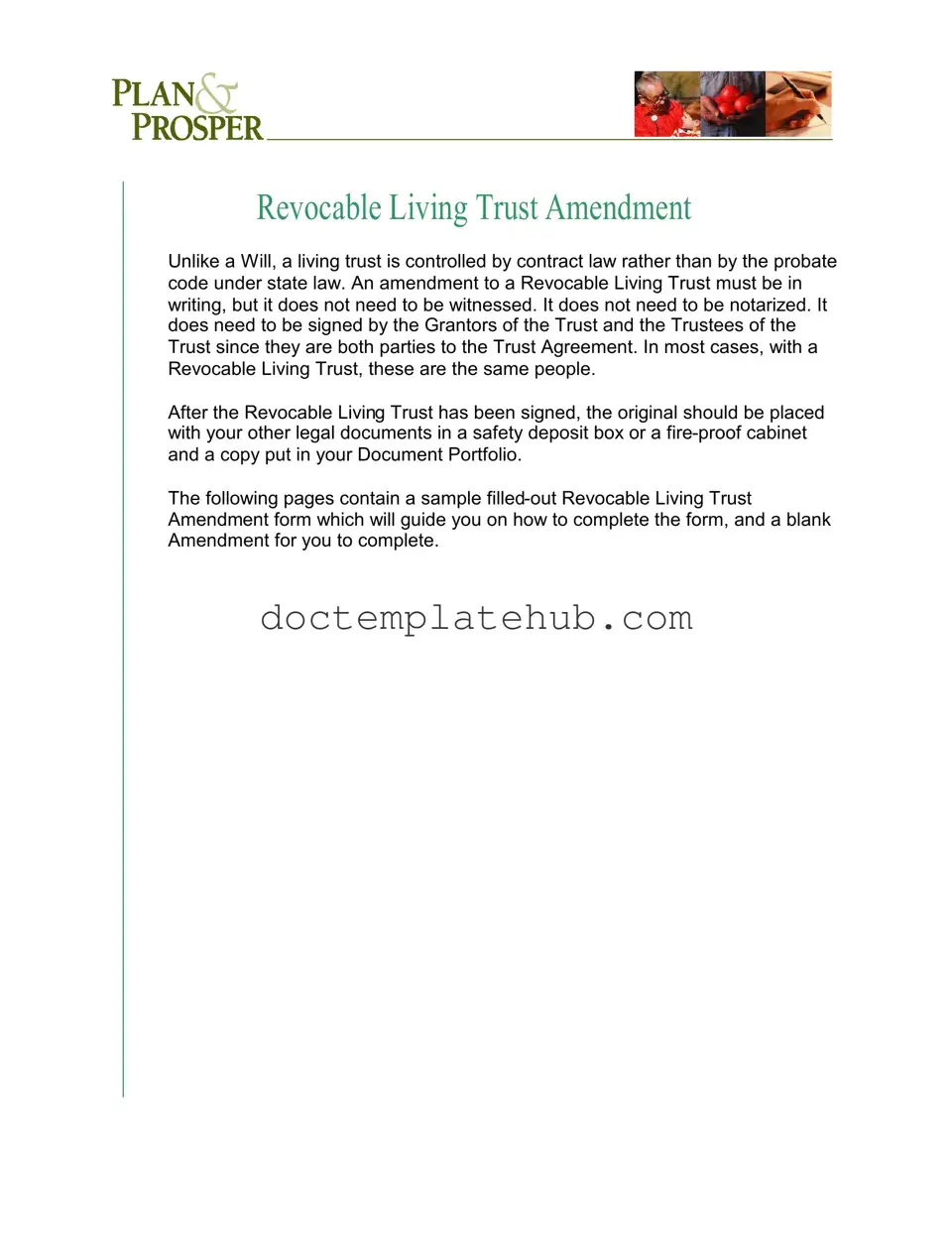What is a Trust Amendment form?
A Trust Amendment form is a legal document used to modify the terms of a Revocable Living Trust. It allows the Grantors and Trustees to make changes to the Trust Agreement without needing to create an entirely new document. This is particularly useful for updating beneficiaries, changing asset distributions, or altering other provisions of the trust.
Who needs to sign the Trust Amendment?
The Trust Amendment must be signed by both the Grantors and the Trustees of the Trust. Since these parties are often the same individuals, it is important for them to agree on the changes being made. Their signatures indicate consent to the modifications outlined in the amendment.
Do I need witnesses or notarization for the Trust Amendment?
No, the Trust Amendment does not require witnesses or notarization. However, it must be in writing and signed by the Grantors and Trustees. Keeping the document secure is essential, so consider storing it with other important legal documents.
What should I do with the completed Trust Amendment?
After completing the Trust Amendment, place the original document in a safe location, such as a safety deposit box or a fire-proof cabinet. Additionally, make a copy for your Document Portfolio to ensure you have easy access to it when needed.
Can I amend my Trust at any time?
Yes, as long as the Trust is revocable, you can amend it at any time. The Grantors retain the right to make changes as their circumstances or intentions evolve. This flexibility is one of the key advantages of a Revocable Living Trust.
What happens if I do not properly amend my Trust?
If you do not properly amend your Trust, the original terms will remain in effect. This could lead to unintended distributions of assets or conflicts among beneficiaries. It is crucial to follow the correct procedures to ensure your wishes are honored.
Is there a sample Trust Amendment form available?
Yes, there is a sample filled-out Trust Amendment form available to guide you in completing your own. This sample can help clarify the necessary information and format required for a valid amendment.
What if I want to revoke my Trust instead of amending it?
If you decide to revoke your Trust rather than amend it, you will need to follow the procedures outlined in the original Trust Agreement. Typically, this involves creating a written document that clearly states your intention to revoke the Trust. It is advisable to consult a legal professional to ensure the revocation is valid and effective.
How does a Trust Amendment differ from a Will amendment?
A Trust Amendment is governed by contract law, while a Will amendment falls under probate law. Unlike a Will, which often requires witnesses and notarization, a Trust Amendment does not have such requirements. This distinction makes amending a Trust generally more straightforward than changing a Will.
